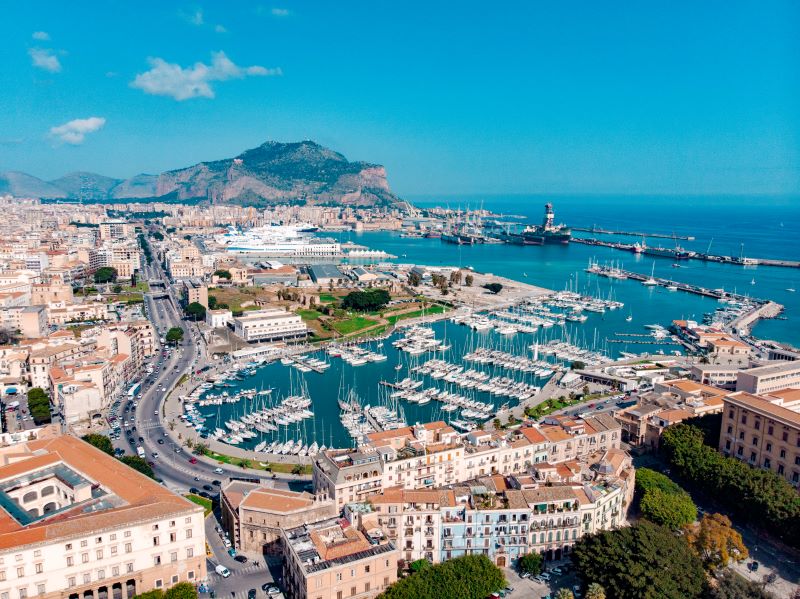
A Virtual Journey: Discovering the Best Cities to Visit in Italy
Jan 17, 2024
Italy, the land of exquisite art, mouthwatering cuisine, and rich history!
Choosing the best cities to visit in this charming country can be quite a task, given the plethora of options. Each city has its own unique charm and cultural treasures. Let's embark on a virtual journey through some of the best cities Italy has to offer.
Rome: The Eternal City
Rome, the capital city of Italy, is a fascinating blend of ancient history, artistic treasures, and vibrant modern life. Here are some highlights and essential information about Rome:
- Historical Landmarks: Rome is home to iconic landmarks from ancient times, including the Colosseum, the Roman Forum, and the Pantheon. These well-preserved monuments offer glimpses into the grandeur and power of the Roman Empire.
- Vatican City: The smallest independent state in the world, Vatican City is located within Rome and is the spiritual and administrative center of the Catholic Church. Visitors can explore St. Peter's Basilica, the Vatican Museums, and the Sistine Chapel, which houses Michelangelo's masterpiece ceiling frescoes.
- Art and Architecture: Rome is a treasure trove of art and architecture, with masterpieces by renowned artists such as Michelangelo, Raphael, and Bernini. Visitors can admire frescoes in the Vatican Museums, sculptures in the Borghese Gallery, and Baroque fountains in the city's piazzas.
- Historic Neighborhoods: Rome's historic neighborhoods are characterized by winding cobblestone streets, charming piazzas, and colorful buildings. Explore the narrow alleys of Trastevere, stroll along the Spanish Steps in the upscale area of the Tridente, or wander through the ancient streets of the Jewish Ghetto.
- Cuisine and Dining: Italian cuisine is celebrated worldwide, and Rome offers a diverse culinary scene that caters to every taste and budget. From traditional trattorias serving classic Roman dishes like pasta carbonara and cacio e pepe to upscale restaurants offering modern interpretations of Italian cuisine, there's something for everyone to enjoy.
- Shopping: Rome is a shopper's paradise, with a mix of high-end designer boutiques, artisanal shops, and bustling markets. Via del Corso, Via Condotti, and Via del Babuino are renowned for their luxury fashion brands, while Campo de' Fiori and Porta Portese Market offer a more eclectic shopping experience.
- Transportation: Getting around Rome is relatively easy thanks to an extensive public transportation system that includes buses, trams, and the metro. Many of the city's major attractions are also within walking distance of each other, making it convenient to explore on foot.
- Climate: Rome has a Mediterranean climate, with hot, dry summers and mild, wet winters. Summer temperatures can soar, so it's advisable to stay hydrated and seek shade during the hottest parts of the day.
Rome is a city that seamlessly blends the ancient and the modern, offering visitors a rich tapestry of history, culture, and culinary delights to explore and enjoy. Don't forget to toss a coin into the Trevi Fountain to ensure your return!
-> If you love food as much as we do, don't skip this article: EATING LIKE A LOCAL IN ROME
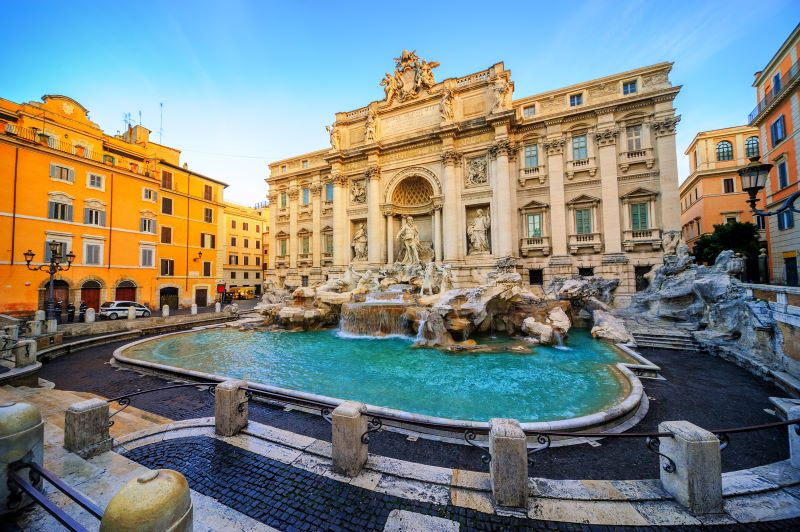
Florence: The Cradle of the Renaissance
Florence, known as Firenze in Italian, is a city in the Tuscany region of Italy, renowned for its rich history, cultural heritage, and artistic treasures. Here are some highlights and essential information about Florence:
- Historical Landmarks: Florence is home to some of the world's most iconic historical landmarks, including the Florence Cathedral (Duomo), which features Brunelleschi's famous dome, the Baptistery of St. John with its beautiful bronze doors, and Giotto's Campanile (bell tower).
- Uffizi Gallery: The Uffizi Gallery is one of the most famous art museums in the world, housing a vast collection of Renaissance masterpieces. Visitors can admire works by artists such as Botticelli, Leonardo da Vinci, Michelangelo, Raphael, and Caravaggio.
- Accademia Gallery: The Accademia Gallery is home to Michelangelo's renowned statue of David, as well as other sculptures and works of art by the artist and his contemporaries. The gallery provides an intimate look at Michelangelo's genius and influence on Renaissance art.
- Ponte Vecchio: The Ponte Vecchio is Florence's most famous bridge, spanning the Arno River. Known for its medieval architecture and rows of shops selling jewelry, art, and souvenirs, the Ponte Vecchio is a picturesque landmark and popular tourist destination.
- Piazza della Signoria: This historic square is the political and cultural heart of Florence, surrounded by impressive statues, including a replica of Michelangelo's David, and the Palazzo Vecchio, Florence's town hall. The square is a vibrant hub of activity and a popular gathering place for locals and tourists alike.
- Boboli Gardens: The Boboli Gardens are an expansive park located behind the Pitti Palace, featuring manicured lawns, ornate fountains, and beautiful sculptures. Visitors can explore the gardens' winding paths and enjoy panoramic views of Florence from the hilltop.
- Cuisine and Dining: Florence offers a delectable culinary scene, with traditional Tuscan dishes that highlight fresh, local ingredients. From hearty ribollita soup and tender bistecca alla fiorentina (Florentine steak) to savory truffle pastas and creamy gelato, Florence is a food lover's paradise.
- Shopping: Florence is known for its artisanal craftsmanship and high-quality goods, including leather products, handmade paper, ceramics, and jewelry. Visitors can explore the city's markets, boutiques, and workshops to discover unique souvenirs and gifts.
- Transportation: Florence's historic center is relatively compact and best explored on foot. The city also has an efficient public transportation system, including buses and trams, which provide access to attractions outside the city center.
Florence's timeless beauty, artistic heritage, and cultural richness make it a captivating destination for travelers seeking to immerse themselves in the heart of Renaissance Italy.
-> Don't miss this valuable article if you are planning on visiting Florence: MAP OF FLORENCE: A GUIDE TO TOURS AND ACTIVITIES WITH US
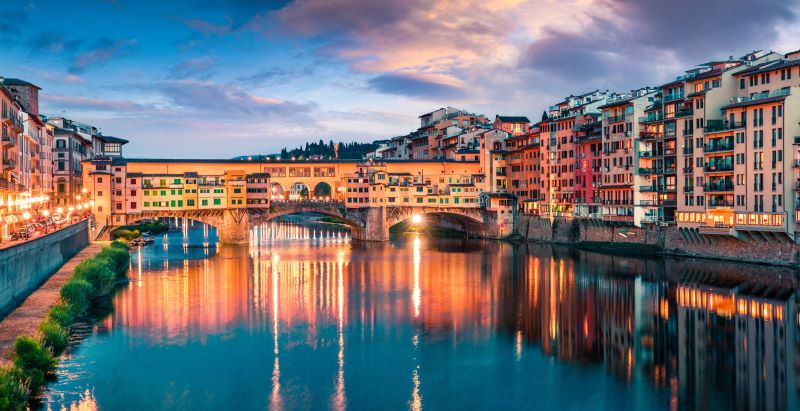
Venice: The City of Canals
Venice, often referred to as the "City of Canals," is a unique and enchanting city located in northeastern Italy. Known for its picturesque waterways, historic architecture, and rich cultural heritage, Venice is one of the most iconic and romantic cities in the world. Here are some highlights and essential information about Venice:
- Canals and Gondolas: Venice is famous for its intricate network of canals, which serve as the city's primary mode of transportation. Visitors can explore Venice's charming waterways by taking a leisurely gondola ride, passing under arched bridges and past historic palaces.
- St. Mark's Square (Piazza San Marco): St. Mark's Square is the main square in Venice and the heart of the city's social and cultural life. Surrounded by architectural marvels such as St. Mark's Basilica, the Doge's Palace, and the Campanile (bell tower), the square is a UNESCO World Heritage Site and a must-visit destination for tourists.
- St. Mark's Basilica: St. Mark's Basilica is one of the most important religious buildings in Venice, known for its stunning Byzantine architecture, intricate mosaics, and gilded domes. Visitors can admire the basilica's ornate interior and climb to the top of the Campanile for panoramic views of the city.
- Doge's Palace: The Doge's Palace is a magnificent Gothic palace that served as the residence of the Doge (ruler) of Venice and the seat of Venetian government for centuries. Visitors can explore the palace's opulent rooms, grand halls, and historic prison cells, including the famous Bridge of Sighs.
- Rialto Bridge: The Rialto Bridge is one of Venice's most iconic landmarks, spanning the Grand Canal and connecting the Rialto market area with the historic center of the city. Visitors can stroll across the bridge, browse the bustling market stalls, and enjoy panoramic views of the canal.
- Venetian Cuisine: Venice offers a rich culinary tradition that reflects its maritime heritage and diverse influences. Visitors can sample local specialties such as cicchetti (small appetizers), fresh seafood dishes, risotto al nero di seppia (black squid ink risotto), and traditional Venetian pastries like frittelle and zaeti.
- Murano and Burano Islands: Just a short boat ride from Venice, the islands of Murano and Burano are famous for their unique artisanal traditions. Murano is renowned for its centuries-old glassmaking industry, while Burano is known for its colorful houses and intricate lacework.
- Transportation: In Venice, water taxis, vaporetti (water buses), and gondolas provide transportation around the city's waterways. Visitors can also explore Venice on foot, wandering through its narrow streets (calli) and across its picturesque bridges.
Venice's timeless beauty, rich history, and romantic ambiance make it a truly unforgettable destination for travelers from around the world.
-> Don't skip this article if you love Venice: 10 CURIOSITIES ABOUT VENICE
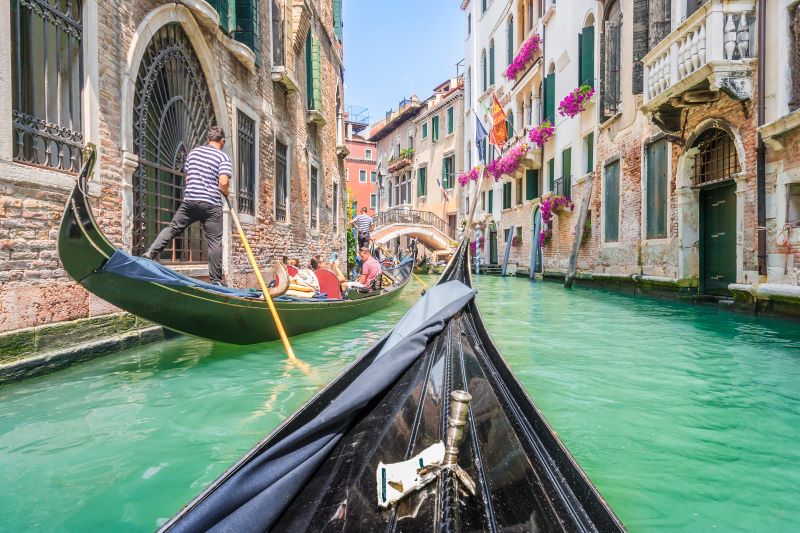
Milan: Fashion and Finance Hub
Milan, the capital of the Lombardy region in northern Italy, is a vibrant and cosmopolitan city known for its fashion, design, finance, and cultural heritage. Here are some highlights and essential information about Milan:
- Fashion and Shopping: Milan is one of the world's fashion capitals, home to renowned fashion houses, luxury boutiques, and high-end designer stores. The Quadrilatero della Moda (Fashion Quadrilateral) is a prestigious shopping district known for its upscale fashion boutiques and designer labels.
- Milan Cathedral (Duomo di Milano): The Milan Cathedral is one of the largest and most famous Gothic cathedrals in the world. Visitors can marvel at its intricate facade, towering spires, and stunning interior adorned with stained glass windows, sculptures, and artwork.
- Galleria Vittorio Emanuele II: Adjacent to the Milan Cathedral, the Galleria Vittorio Emanuele II is one of the world's oldest shopping malls and a symbol of Milanese elegance and luxury. The ornate glass-roofed arcade is lined with upscale shops, cafes, and restaurants.
- Leonardo da Vinci's Last Supper: Housed in the refectory of the Convent of Santa Maria delle Grazie, Leonardo da Vinci's iconic mural, The Last Supper, is a UNESCO World Heritage Site and one of Milan's most famous attractions. Advanced reservations are required to view this masterpiece.
- Sforza Castle (Castello Sforzesco): The Sforza Castle is a historic fortress and museum complex that houses several museums and art collections, including Michelangelo's unfinished sculpture, the Rondanini Pietà, and works by renowned artists such as Tintoretto and Canaletto.
- Brera District: The Brera district is a charming and artistic neighborhood known for its narrow cobblestone streets, picturesque squares, and vibrant arts scene. It is home to the Pinacoteca di Brera, an important art gallery featuring works by Italian masters such as Caravaggio and Raphael.
- Navigli District: The Navigli district is characterized by its network of navigable canals lined with cafes, bars, and restaurants. Visitors can stroll along the canals, browse the antique markets, and enjoy the lively atmosphere of this historic neighborhood.
- Cuisine and Dining: Milan offers a diverse culinary scene that showcases the flavors of Lombardy and northern Italy. Visitors can sample traditional Milanese dishes such as risotto alla milanese, ossobuco, and panettone, as well as international cuisine from around the world.
- Transportation: Milan has an efficient public transportation system that includes metro, tram, and bus services, making it easy to navigate the city and reach its various attractions and neighborhoods.
Milan's dynamic blend of history, culture, fashion, and gastronomy makes it a captivating destination for travelers seeking to explore the best of Italy's northern region.
-> Check this article if you are planning your next visit to Milan: WHAT TO DO IN MILAN
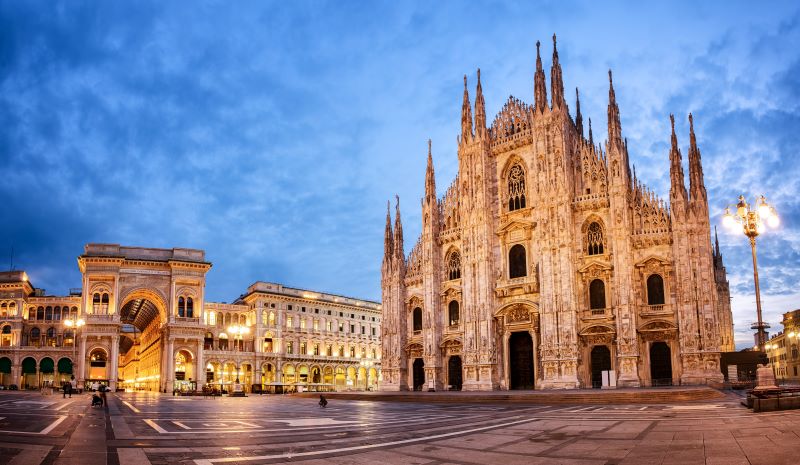
Naples: Gateway to Southern Italy
Naples, located in the southern region of Italy, is a city steeped in history, art, and culinary tradition. Here are some highlights and essential information about Naples:
- Historical Landmarks: Naples boasts a wealth of historical landmarks, including the Naples Cathedral (Duomo di Napoli) with its impressive Baroque facade and the Castel Nuovo, a medieval castle overlooking the city's waterfront. The Naples National Archaeological Museum is home to an extensive collection of ancient Roman artifacts, including mosaics, sculptures, and frescoes from Pompeii and Herculaneum.
- Pompeii and Herculaneum: Just a short distance from Naples are the ancient Roman cities of Pompeii and Herculaneum, which were buried by the eruption of Mount Vesuvius in 79 AD. Visitors can explore remarkably preserved ruins, including houses, temples, and public buildings, providing insight into daily life in ancient times.
- Cuisine and Pizza: Naples is renowned for its delicious cuisine, including traditional Neapolitan pizza, which is characterized by its thin crust, fresh ingredients, and wood-fired cooking method. Visitors can sample authentic Neapolitan pizza at pizzerias throughout the city, including the famous pizzerias on Via dei Tribunali and Via Toledo.
- Street Markets and Shopping: Naples is home to vibrant street markets where visitors can browse a variety of goods, including fresh produce, seafood, clothing, and souvenirs. The daily Mercato di Porta Nolana and the weekly Mercato di Poggioreale are popular destinations for locals and tourists alike. For upscale shopping, the Galleria Umberto I is an elegant shopping arcade located in the heart of the city.
- Capodimonte Museum and Park: The Capodimonte Museum is housed in a former royal palace and features an impressive collection of art, including paintings, sculptures, and decorative arts from the Renaissance to the 20th century. The surrounding Capodimonte Park offers beautiful gardens, walking paths, and panoramic views of the city.
- Vesuvius National Park: Mount Vesuvius, one of the most famous volcanoes in the world, is located near Naples. Visitors can hike to the crater rim for breathtaking views of the Bay of Naples and the surrounding countryside. Guided tours are available, providing insight into the geology and history of the volcano.
- Waterfront Promenade: The Lungomare Caracciolo is a scenic waterfront promenade that stretches along the Bay of Naples, offering stunning views of the sea and the city skyline. Visitors can enjoy leisurely walks, jogging, or simply relaxing by the water with a gelato or coffee.
- Transportation: Naples has a comprehensive public transportation system that includes buses, trams, and a metro network, making it easy to navigate the city and reach its various attractions and neighborhoods.
Naples' rich cultural heritage, culinary delights, and stunning natural scenery make it a captivating destination for travelers exploring southern Italy.
-> Don't miss this article if you are or will be in Naples and want to explore more: THE BEST DAY TRIPS FROM NAPLES
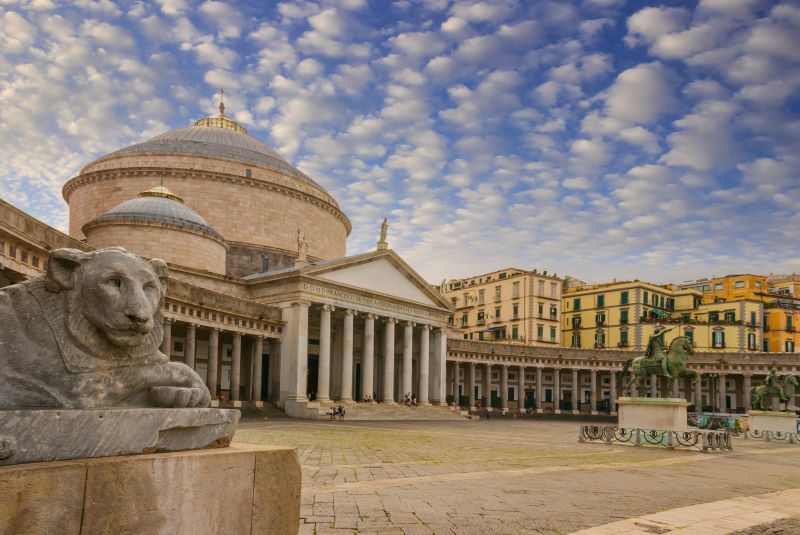
Verona: The City of Love
Verona, located in the Veneto region of northern Italy, is a city famous for its romantic charm, rich history, and cultural significance. Here are some highlights and essential information about Verona:
- Juliet's House (Casa di Giulietta): One of Verona's most iconic landmarks, Juliet's House is said to have inspired William Shakespeare's tragic love story, "Romeo and Juliet." Visitors can admire the balcony where Juliet is said to have famously called out to Romeo, as well as the courtyard adorned with love letters and graffiti.
- Verona Arena: The Verona Arena is a well-preserved Roman amphitheater dating back to the 1st century AD. Today, it hosts opera performances, concerts, and cultural events throughout the year, including the renowned Verona Opera Festival during the summer months.
- Piazza delle Erbe: Piazza delle Erbe is Verona's main square and a bustling hub of activity. Surrounded by historic buildings, cafes, and market stalls, the square is a popular gathering place for locals and tourists alike. Visitors can explore the market, admire the architecture, and soak in the vibrant atmosphere.
- Castelvecchio: Castelvecchio is a medieval fortress and museum complex that houses a collection of art, sculptures, and artifacts from the Middle Ages to the Renaissance. Visitors can explore the castle's ramparts, towers, and courtyards, as well as admire works by artists such as Pisanello and Mantegna.
- Basilica of San Zeno Maggiore: The Basilica of San Zeno Maggiore is a beautiful Romanesque church dedicated to Verona's patron saint, St. Zeno. Known for its stunning architecture, ornate bronze doors, and medieval frescoes, the basilica is a must-visit for art and history enthusiasts.
- Ponte Scaligero: Ponte Scaligero is a historic bridge spanning the Adige River and connecting the Castelvecchio fortress with the historic center of Verona. The bridge's medieval architecture and elegant arches make it a picturesque landmark and popular spot for photography.
- Wine and Cuisine: Verona is located in the heart of the Veneto wine region, known for its excellent wines, including Valpolicella, Amarone, and Soave. Visitors can sample regional specialties such as risotto, polenta, pastas, and delicious gelato at local trattorias, osterias, and cafes.
- Transportation: Verona has a compact historic center that is best explored on foot. The city also has an efficient public transportation system, including buses and taxis, which provide access to attractions outside the city center.
Verona's romantic atmosphere, architectural treasures, and cultural heritage make it a captivating destination for travelers seeking to immerse themselves in the beauty and history of northern Italy.
-> Click here for more: 10 THINGS TO KNOW ABOUT VERONA

Bologna: The Culinary Capital
Bologna, the capital of the Emilia-Romagna region in northern Italy, is a vibrant city known for its rich history, cultural heritage, and culinary tradition. Here are some highlights and essential information about Bologna:
- Medieval Towers: Bologna is famous for its medieval towers, the most prominent of which is the Two Towers (Due Torri) – the Asinelli Tower and the Garisenda Tower. Visitors can climb the Asinelli Tower for panoramic views of the city and surrounding countryside.
- Piazza Maggiore: Piazza Maggiore is the main square in Bologna and the heart of the city's historic center. It is surrounded by important landmarks, including the Gothic Basilica of San Petronio, the Fountain of Neptune, and the Palazzo d'Accursio (City Hall).
- Architectural Heritage: Bologna boasts a wealth of architectural treasures, with well-preserved medieval and Renaissance buildings lining its streets and squares. The city's historic center is a UNESCO World Heritage Site and offers a fascinating mix of architectural styles.
- University of Bologna: Founded in 1088, the University of Bologna is one of the oldest universities in the world and a prestigious center of learning. Visitors can explore the university's historic buildings, libraries, and museums, including the Archiginnasio Palace and the Anatomical Theatre.
- Porticoes: Bologna is famous for its extensive network of porticoes, which are covered walkways that line the city's streets. Stretching for over 40 kilometers, the porticoes provide shade and shelter from the elements and are a distinctive feature of Bologna's urban landscape.
- Cuisine: Bologna is renowned for its culinary delights, including traditional dishes such as tortellini, tagliatelle al ragù (Bolognese sauce), mortadella, and lasagna. Visitors can sample these specialties at local trattorias, osterias, and markets throughout the city.
- Cultural Events: Bologna hosts a variety of cultural events and festivals throughout the year, including the Bologna Children's Book Fair, the Bologna Jazz Festival, and the Cinema Ritrovato film festival. These events attract visitors from around the world and showcase Bologna's vibrant cultural scene.
- Day Trips: Bologna serves as an excellent base for exploring the surrounding region of Emilia-Romagna. Nearby attractions include the medieval town of Ravenna with its stunning mosaics, the Ferrari Museum in Maranello, and the picturesque towns of Parma and Modena.
- Transportation: Bologna is well-connected by train to other major cities in Italy, including Florence, Venice, and Milan. The city also has an efficient public transportation system, including buses and a metro line, which makes it easy to navigate and explore.
Bologna's unique blend of history, culture, and gastronomy makes it a captivating destination for travelers seeking to experience the best of northern Italy.
-> Check this article for nearby locations you can visit while in Bologna: THE MAIN CITIES OF THE REGION
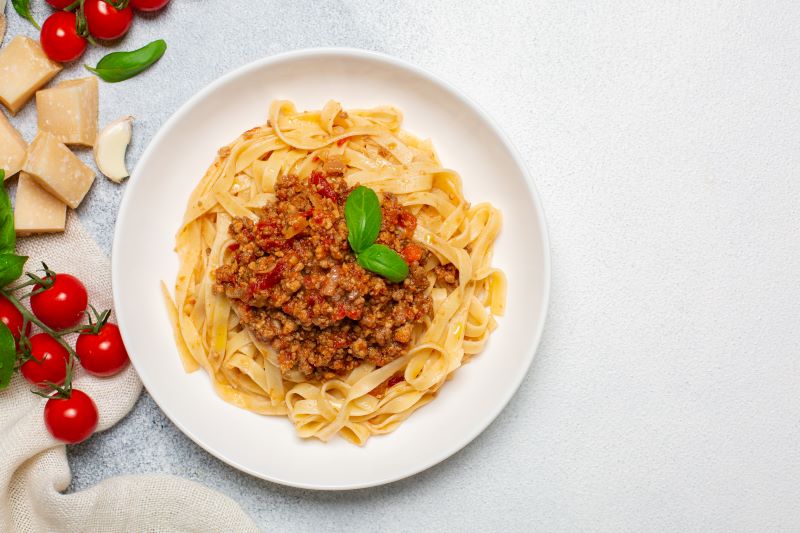
Turin: Italy's Unsung Hero
Turin, the capital of the Piedmont region in northwest Italy, is a city renowned for its rich history, elegant architecture, and cultural heritage. Here are some highlights and essential information about Turin:
- Royal Residences of Turin: Turin is home to several magnificent royal residences, including the Palazzo Reale (Royal Palace) in Piazza Castello and the Palazzo Madama, which houses the Museum of Ancient Art. Visitors can explore the opulent interiors, grand halls, and extensive art collections of these historic palaces.
- Mole Antonelliana: The Mole Antonelliana is an iconic landmark and symbol of Turin, originally built as a synagogue and later converted into a museum. It now houses the National Museum of Cinema, where visitors can learn about the history of filmmaking and enjoy panoramic views of the city from the top of the tower.
- Egyptian Museum: The Egyptian Museum of Turin is one of the largest collections of Egyptian antiquities outside of Egypt, featuring artifacts, statues, and mummies spanning thousands of years of ancient Egyptian history. It is considered one of the most important museums of its kind in the world.
- Turin Cathedral (Duomo di Torino): The Turin Cathedral is home to the famous Shroud of Turin, a linen cloth believed by some to bear the image of Jesus Christ. The cathedral also features beautiful Renaissance architecture and works of art by prominent Italian artists.
- Piazza Castello: Piazza Castello is the central square of Turin and a lively gathering place surrounded by historic buildings, cafes, and shops. It is home to the Royal Palace, Palazzo Madama, and the Royal Theatre, as well as the beautiful Royal Gardens.
- Turin's Culinary Delights: Turin is renowned for its culinary tradition, which includes specialties such as gianduja chocolate, bicerin (a layered coffee drink), and agnolotti pasta. Visitors can sample these delicious treats at local cafes, pastry shops, and restaurants throughout the city.
- Turin's Automobile Heritage: Turin has a rich automotive heritage and is home to the Museo Nazionale dell'Automobile (National Automobile Museum), which showcases the history of Italian and international car manufacturers, including Fiat, Lancia, and Ferrari.
- Parks and Green Spaces: Turin offers several beautiful parks and green spaces where visitors can relax and enjoy nature, including the Parco del Valentino along the Po River and the Parco della Collina di Superga, which offers panoramic views of the city and surrounding countryside.
- Transportation: Turin has an efficient public transportation system, including buses and trams, which makes it easy to navigate the city and reach its various attractions and neighborhoods. The city also has a bike-sharing program and pedestrian-friendly streets for exploring on foot.
Turin's elegant architecture, cultural attractions, and culinary delights make it a captivating destination for travelers seeking to experience the charm and history of northern Italy.
-> Don't skip this article if you are visiting Turin: TOP 5 THINGS TO DO IN TURIN
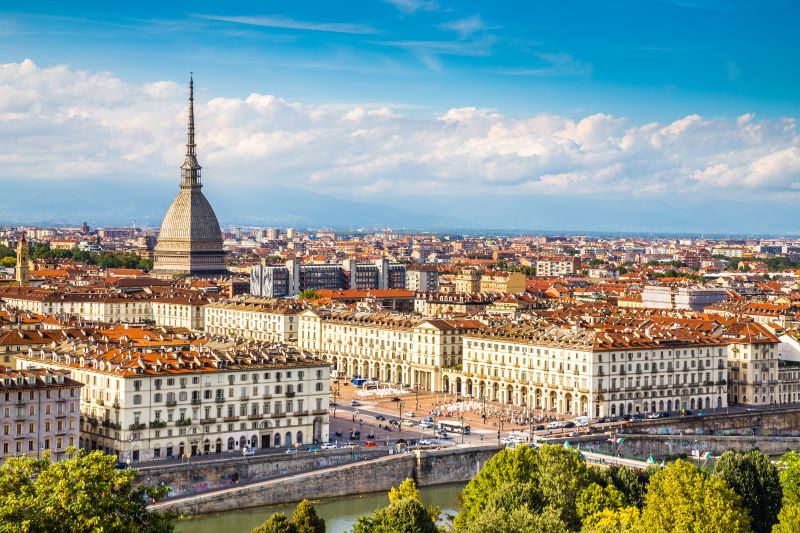
Siena: A Medieval Gem
Siena, a picturesque city located in the heart of Tuscany, Italy, is renowned for its medieval architecture, historic landmarks, and vibrant cultural heritage. Here are some highlights and essential information about Siena:
- Piazza del Campo: Piazza del Campo is the main square of Siena and one of the most famous medieval squares in Italy. The shell-shaped square is surrounded by historic buildings, including the Palazzo Pubblico (Town Hall) and the Torre del Mangia (Mangia Tower). The square is also the site of the Palio di Siena, a thrilling horse race held twice a year.
- Siena Cathedral (Duomo di Siena): The Siena Cathedral is a magnificent example of Italian Gothic architecture and one of the most striking cathedrals in Italy. Visitors can admire the intricate facade, ornate interior, and stunning artworks, including Michelangelo's unfinished sculptures.
- Palazzo Pubblico: The Palazzo Pubblico is a medieval palace that houses the Civic Museum of Siena. Visitors can explore the palace's grand halls, frescoed rooms, and art collections, including Ambrogio Lorenzetti's famous frescoes in the Sala dei Nove (Hall of the Nine).
- Siena's Contrade: Siena is divided into 17 neighborhoods, known as contrade, each with its own distinct identity and traditions. The contrade compete in the Palio di Siena, a historic horse race that has been held in the city since the Middle Ages. Visitors can learn about the contrade's history and culture at the Contrada museums and workshops.
- Medieval Streets and Alleys: Siena's historic center is a maze of narrow streets, alleys, and hidden courtyards that are perfect for exploring on foot. Visitors can wander through the city's charming neighborhoods, discover hidden gems, and soak in the medieval atmosphere.
- Siena's Culinary Delights: Siena is known for its delicious Tuscan cuisine, including hearty soups, cured meats, pecorino cheese, and traditional pastries like panforte and ricciarelli. Visitors can sample these specialties at local trattorias, osterias, and bakeries throughout the city.
- Chianti Wine Region: Siena is located in the heart of the Chianti wine region, known for its world-class wines and scenic countryside. Visitors can take wine tours, visit vineyards and wineries, and sample the region's renowned Chianti Classico wines.
- Transportation: Siena's historic center is pedestrian-friendly and best explored on foot. The city is well-connected by bus to other towns and cities in Tuscany, including Florence and San Gimignano. Visitors can also take scenic drives through the Tuscan countryside to explore the region's charming villages and landscapes.
Siena's rich history, stunning architecture, and cultural traditions make it a captivating destination for travelers seeking to experience the beauty and charm of Tuscany.
-> Don't miss this valuable article if you are planning on visiting Siena: EXPLORE SIENA'S HIDDEN TREASURES WITH US
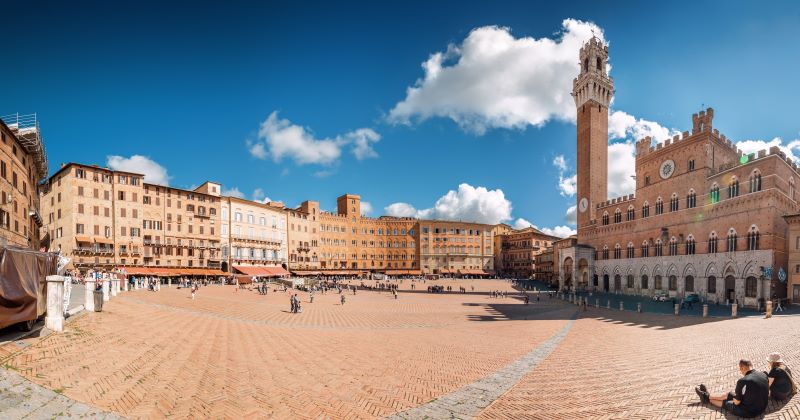
These are just a few highlights of the many incredible cities Italy has to offer. Each of these cities contributes to the rich tapestry of Italy, offering a diverse array of experiences. Whether you're an art enthusiast, a history buff, a food lover, or someone simply seeking the magic of la dolce vita, Italy's cities are sure to leave an indelible mark on your heart. Pack your bags and get ready to explore the beauty and culture that make Italy a timeless and unforgettable destination. Buon viaggio!
 Italian
Italian Spanish
Spanish French
French Chinese
Chinese German
German
